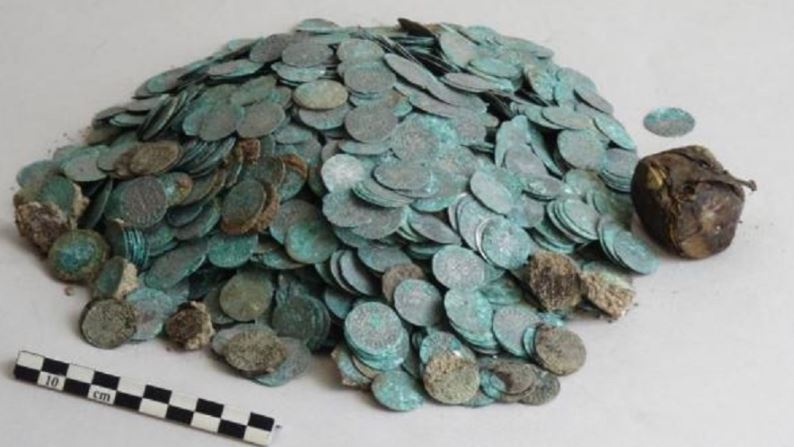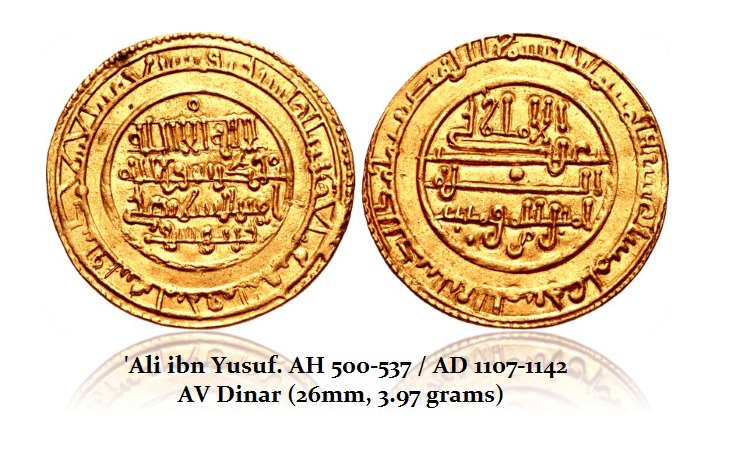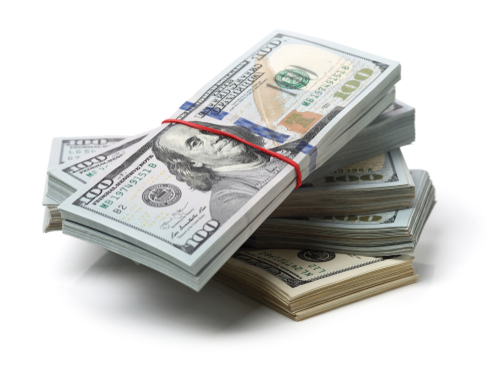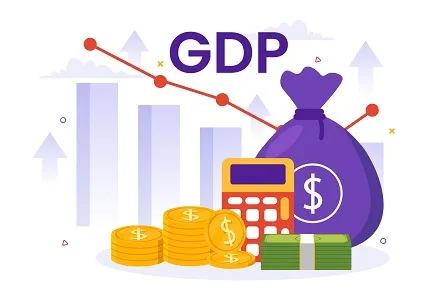Some Archaeologists in France with the National Center for Scientific Research announced that they have unearthed a hoard of 2,200 silver deniers and oboles, 21 Islamic gold dinars, a very impressive gold signet ring from the Abbey of Cluny, located in Saône-et-Loire, reported by Mining. While they have claimed this is the largest hoard and seem confused as to why there were 21 Islamic gold dinars, their lack of knowledge of the world monetary system has been exposed by their claims.
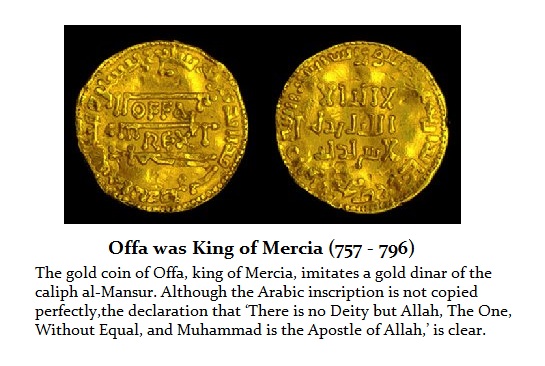 The gold dinars were minted between 1121 and 1131 under the reign of Ali ibn Yusuf (1106–1143). There was no gold coins issue by Europeans until the 13th century. The gold dinars were replacing the Byzantine coinage, which was being debased going into the Great Monetary Crisis of 1092. The dominant coinage to replace Byzantine was that of the rising Islamic empire.
The gold dinars were minted between 1121 and 1131 under the reign of Ali ibn Yusuf (1106–1143). There was no gold coins issue by Europeans until the 13th century. The gold dinars were replacing the Byzantine coinage, which was being debased going into the Great Monetary Crisis of 1092. The dominant coinage to replace Byzantine was that of the rising Islamic empire.
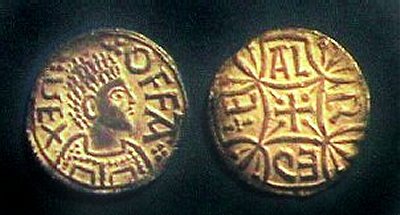 Further proof that Islamic dinars were replacing Byzantine coinage in world trade is the rare issue of Offa, who was a king in Mercia, England (757-796). It was Offa who reestablished the silver coinage in Europe coming out of the Dark Age. He struck this coin copying the Islamic writing with no real understanding what it even said. He then inscribes his name “OFFA REX” (king Offa) as a statement of power. However, the mere fact he is imitating the Islamic dinar demonstrates it acceptance in international trade as early as the 8th century.
Further proof that Islamic dinars were replacing Byzantine coinage in world trade is the rare issue of Offa, who was a king in Mercia, England (757-796). It was Offa who reestablished the silver coinage in Europe coming out of the Dark Age. He struck this coin copying the Islamic writing with no real understanding what it even said. He then inscribes his name “OFFA REX” (king Offa) as a statement of power. However, the mere fact he is imitating the Islamic dinar demonstrates it acceptance in international trade as early as the 8th century.
While the archaeologists seem astonished to find gold Islamic dinars in France, they obviously lack the knowledge of the monetary system. Part of the Dark Age was driven by superstition. Bathing fell out of practice because a Roman bathhouse began to imply a brothel so it became un-Godly to bathe. Being able to use charts and maps was the work of the devil. Captains of a ship were usually Jewish who had no religious problem with such instruments.
The Arabs controlled the seas and as such trade. Therefore, we find Islamic gold dinars throughout Europe as evidence of world trade. They are rare since most Europeans had nothing to really trade. Nevertheless, a hoard with 21 gold dinars reflects someone of wealth and engaged in international trade.

